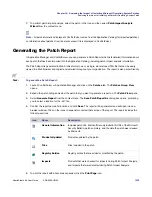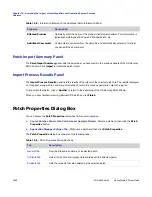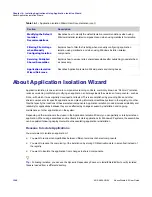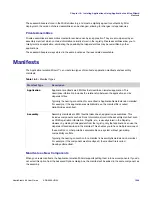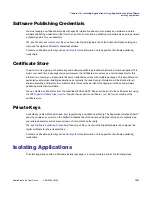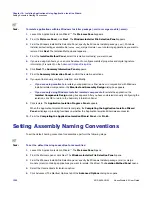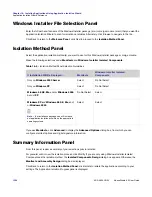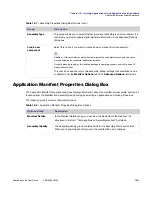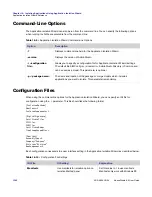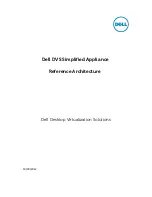
Chapter 16: Isolating Applications Using Application Isolation Wizard
Manifests
AdminStudio 9.5 User Guide
ADS-0950-UG00
1349
These assemblies are stored in the WinSxS directory, and must be digitally signed for authenticity. After
deployment, the version of shared assemblies can be changed, allowing for changes in dependencies.
Private Assemblies
Private assemblies are assemblies created for exclusive use by an application. They are accompanied by an
assembly manifest, which contains information normally stored in the registry. Private assemblies allow you to
totally isolate an application, eliminating the possibility that dependent files may be overwritten by other
applications.
These assemblies are always stored in the same location as their associated executable.
Manifests
The Application Isolation Wizard™ can create two types of manifests: application manifests and assembly
manifests.
Manifests as New Components
When you create manifests, the Application Isolation Wizard supports putting them into new components. If you do
not select this option from the Advanced Options dialog box, the manifest will be added to the same component as
the assembly.
Table 16-2 •
Manifest Types
Manifest Type
Description
Application
Application manifests are XML files that describe an isolated application. This
descriptive information includes the relationship between the application and its
dependent files.
Typically, the naming convention for a manifest is ApplicationName.Extension.manifest.
For example, if the application was HelloWorld.exe, the manifest file is called
HelloWorld.exe.manifest.
Assembly
Assembly manifests are XML files that describe an application’s assemblies. This
includes components such as DLLs. Information stored in the assembly manifest, such
as COM registration information, ProgIDs, etc., is usually stored in the Registry.
However, by making it independent from the registry, only that application can use the
dependent files described in the manifest. This enables you to have multiple versions of
the same DLL or other portable executable file on a system without generating
compatibility conflicts.
Typically, the naming convention for a manifest is AssemblyName.Extension.manifest.
For example, if the component was Goodbye.dll, the manifest file is called
Goodbye.dll.manifest.
Summary of Contents for ADMINSTUDIO 9.5
Page 1: ...AdminStudio 9 5 User Guide Version 9 5...
Page 50: ...Contents 50 ADS 0950 UG00 AdminStudio 9 5 User Guide...
Page 52: ...52 ADS 0950 UG00 AdminStudio 9 5 User Guide...
Page 156: ...156 ADS 0950 UG00 AdminStudio 9 5 User Guide...
Page 440: ...440 ADS 0950 UG00 AdminStudio 9 5 User Guide...
Page 1090: ...1090 ADS 0950 UG00 AdminStudio 9 5 User Guide...
Page 1426: ...1426 ADS 0950 UG00 AdminStudio 9 5 User Guide...
Page 1686: ...1686 ADS 0950 UG00 AdminStudio 9 5 User Guide...
Page 1794: ...Chapter 24 AdminStudio Public API Reference 1794 ADS 0950 UG00 AdminStudio 9 5 User Guide...
Page 1842: ...Index 1842 ADS 0950 UG00 AdminStudio 9 5 User Guide...

